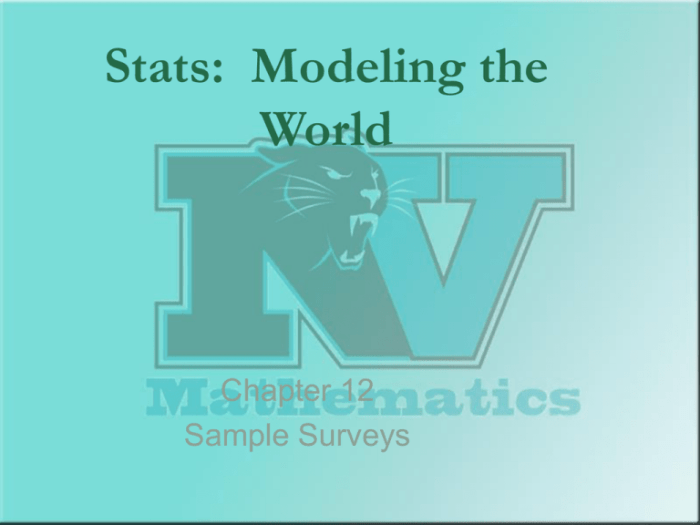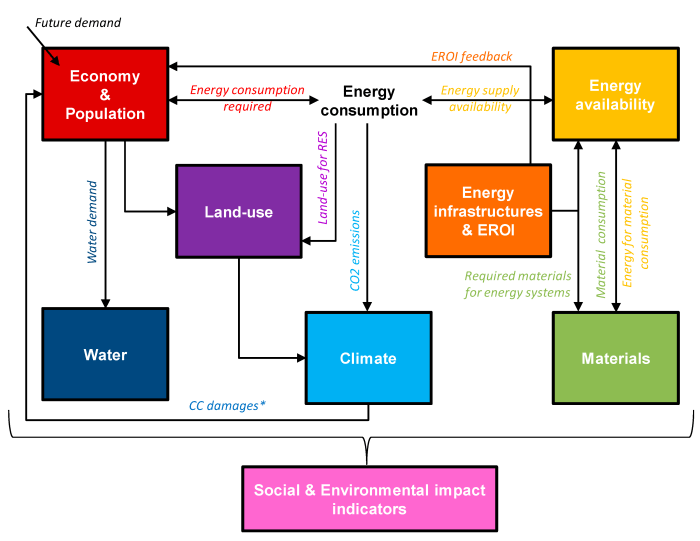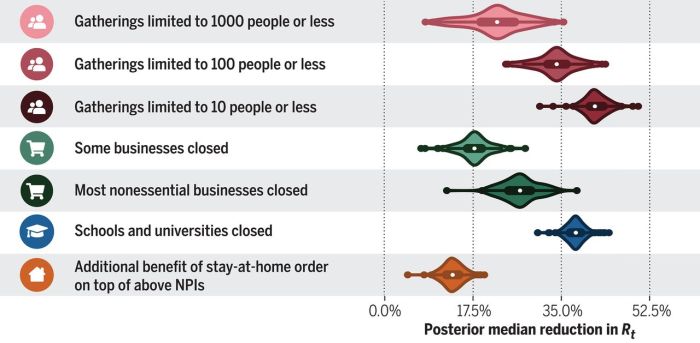Stats modeling the world 6th edition – Stats Modeling the World, 6th Edition, emerges as an authoritative guide, providing a comprehensive exploration of statistical concepts and techniques. This renowned textbook delves into the fundamentals of data collection, analysis, and modeling, empowering readers with the tools to navigate the complexities of the modern data-driven world.
From the outset, this meticulously crafted text establishes a solid foundation in statistical principles, guiding readers through the intricacies of sampling, descriptive and inferential statistics, and regression analysis. It seamlessly blends theoretical underpinnings with practical applications, showcasing the transformative power of statistics in diverse fields such as finance, healthcare, and marketing.
Introduction
Stats: Modeling the World, 6th Editionis a comprehensive textbook that provides a thorough introduction to the field of statistics. The book covers a wide range of topics, from data collection and analysis to probability and statistical inference. It is an essential resource for students and professionals who want to learn about the fundamentals of statistics and how to apply them to real-world problems.
The book is divided into six parts. The first part provides an overview of the field of statistics and the different types of data that statisticians work with. The second part covers data collection and analysis, including sampling techniques, survey design, and descriptive statistics.
The third part covers probability and statistical inference, including the concepts of probability, conditional probability, and Bayes’ theorem. The fourth part covers statistical modeling, including linear regression models, logistic regression models, and time series models. The fifth part covers the applications of statistics in various fields, such as business, economics, and the social sciences.
The sixth part covers ethical considerations related to the use of statistics.
Data Collection and Analysis

Data Collection
Data collection is the process of gathering information about a population. There are many different methods of data collection, including surveys, experiments, and observational studies. The choice of data collection method depends on the type of information that is needed and the resources that are available.
Surveys are a common method of data collection. Surveys involve asking people questions about their opinions, beliefs, or behaviors. Surveys can be conducted in person, by mail, or over the phone. Experiments are another common method of data collection. Experiments involve manipulating one or more variables to see how it affects the outcome of an experiment.
Data Analysis
Data analysis is the process of using statistical techniques to describe and summarize data. Descriptive statistics are used to describe the central tendency, variability, and distribution of data. Inferential statistics are used to make inferences about a population based on a sample of data.
There are many different statistical techniques that can be used to analyze data. The choice of statistical technique depends on the type of data that is being analyzed and the research question that is being asked.
Probability and Statistical Inference

Probability
Probability is the study of the likelihood of events. Probability can be used to predict the outcome of an experiment or to make inferences about a population based on a sample of data.
The fundamental concepts of probability include conditional probability and Bayes’ theorem. Conditional probability is the probability of an event occurring given that another event has already occurred. Bayes’ theorem is a formula that can be used to calculate the probability of an event based on the probability of its causes.
Statistical Inference
Statistical inference is the process of using probability to make inferences about a population based on a sample of data. Statistical inference is used to make decisions about the population based on the sample.
There are many different types of statistical inference, including hypothesis testing and confidence intervals. Hypothesis testing is used to determine whether there is a statistically significant difference between two groups. Confidence intervals are used to estimate the true value of a population parameter.
Statistical Modeling
Types of Statistical Models
Statistical models are mathematical representations of the relationship between two or more variables. Statistical models can be used to predict the outcome of an experiment or to make inferences about a population based on a sample of data.
There are many different types of statistical models, including linear regression models, logistic regression models, and time series models. Linear regression models are used to predict the value of a continuous variable based on the value of one or more independent variables.
Logistic regression models are used to predict the probability of an event occurring based on the value of one or more independent variables. Time series models are used to predict the value of a variable over time.
Model Selection and Evaluation
Model selection is the process of choosing the best statistical model for a given dataset. Model evaluation is the process of assessing the performance of a statistical model.
There are many different criteria that can be used to select and evaluate statistical models. Some of the most common criteria include the coefficient of determination, the root mean squared error, and the Akaike information criterion.
Applications of Statistics: Stats Modeling The World 6th Edition
Statistics is used in a wide variety of fields, including business, economics, the social sciences, and the natural sciences. Statistics is used to make decisions about everything from the design of a new product to the effectiveness of a new drug.
Business and Economics
Statistics is used in business and economics to make decisions about everything from the price of a product to the location of a new store. Statistics is also used to forecast economic trends and to analyze the performance of companies.
Social Sciences
Statistics is used in the social sciences to study human behavior. Statistics is used to analyze data from surveys, experiments, and observational studies. Statistics is also used to develop theories about human behavior.
Natural Sciences
Statistics is used in the natural sciences to study the natural world. Statistics is used to analyze data from experiments, observational studies, and simulations. Statistics is also used to develop theories about the natural world.
Medicine
Statistics is used in medicine to study the effectiveness of new drugs and treatments. Statistics is also used to develop new diagnostic tests and to identify risk factors for diseases.
Ethical Considerations

The use of statistics has important ethical implications. Statisticians must be aware of the potential for bias and misuse of statistics. Statisticians must also be aware of the importance of data privacy and confidentiality.
Bias and Misuse of Statistics, Stats modeling the world 6th edition
Bias can occur when data is collected or analyzed in a way that favors one outcome over another. Misuse of statistics can occur when statistics are used to support a false or misleading claim.
Statisticians must be aware of the potential for bias and misuse of statistics. Statisticians must also be aware of the importance of data privacy and confidentiality.
Data Privacy and Confidentiality
Data privacy and confidentiality are important ethical considerations for statisticians. Statisticians must protect the privacy of the individuals who provide data. Statisticians must also protect the confidentiality of the data that they collect.
Questions Often Asked
What is the significance of Stats Modeling the World, 6th Edition?
As the sixth edition of a widely acclaimed textbook, it presents a comprehensive and up-to-date treatment of statistical concepts and techniques, making it an essential resource for students and professionals alike.
What key concepts are covered in the textbook?
The textbook covers a wide range of topics, including data collection, analysis, probability, statistical inference, and statistical modeling. It provides a solid foundation in statistical principles and their applications in various fields.
How does the textbook balance theory and practice?
The textbook effectively combines theoretical explanations with practical examples, allowing readers to grasp the concepts and see how they are applied in real-world scenarios. This approach enhances understanding and facilitates the application of statistical techniques.